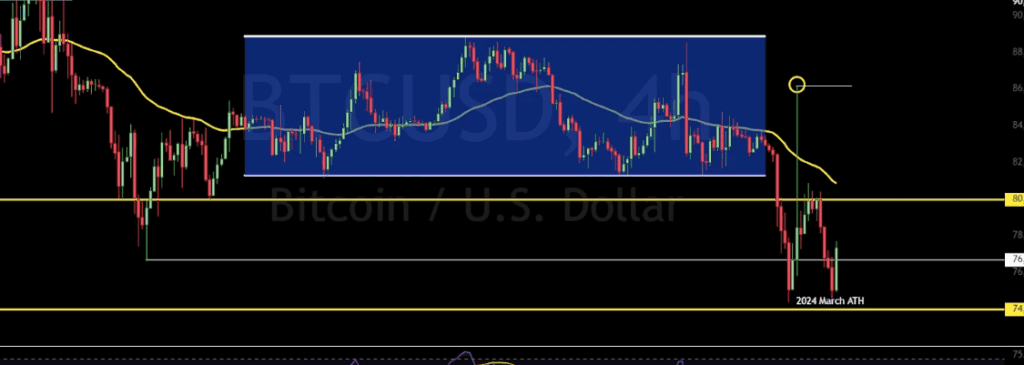In this article, I will outline the steps for creating a bridging layer for private transactions.
I will discuss the crucial aspects that encryption, smart contracts, and cross-chain communications involve, and outline pragmatic methods to build a secure and effective bridge.
Ultimately, you will learn how to integrate private and public networks with a complete mask over the transaction information.
What is a Bridging Layer?
A bridging layer connects blockchains by facilitating the secure exchange of assets, transactions, and other forms of blockchain data.
As a middleware component, it ensures that the core systems remain untouched while enabling seamless interoperability. Protecting the data being transferred on a blockchain is the bridging layer’s core function.
It encrypts the details of cross-border transactions, verifies them through consensus or smart contract processes, and seamlessly transmits them to other blockchains while ensuring the critical information remains shielded.
Users and applications can work within different blockchain environments through the seamless integration of cross-chain communication, encrypted modules, and validated bridging logic. The processes advanced bridging layers permit are safe, smart, transparent, and efficient.
How To Create A Bridging Layer For Private Transactions
Example: Creating a Bridging Layer Using Polygon for Private Transactions

Step 1: Define Requirements
Interoperable networks and confidentiality across chains must be ensured when using zk-SNARKs and other privacy protocols.
Step 2: Set Up Encryption & Privacy Modules
Transaction details must be encrypted to mask the identities of the sender, receiver, and the transaction amount.
Step 3: Build Cross-Chain Communication
Validated, encrypted transactions between Ethereum and private networks are securely transferred using the Polygon Bridge and other relayers.
Step 4: Smart Contract Integration
Smart contracts must be deployed for validation, token and transaction management, and logging, while ensuring transaction confidentiality.
Step 5: Testing & Deployment
Deploy to Mainnets after Polygon Mumbai Testnet and Ethereum testnets are tested, audited for security, and confirmed for privacy.
Why do we need a bridging layer for private transactions?

The bridging layer for private transactions is necessary because private blockchains and privacy preserving protocols can usually not interact with public blockchains or other networks.
A bridging layer enables interoperability and cross network data transfers of assets, data, or smart contract information without exposing sensitive information.
Transaction privacy is achieved through encryption or zero-knowledge proofs,and integrity and validation is ensured through consensus or smart contracts.
Scalability and flexibility is attained across numerous blockchain ecosystems. In other words, it bridges independent blockchains for cross-chain transactions while maintaining compliance with privacy regulations.
What are the Main components of a Bridging layer
Encryption/decryption modules for privacy
These modules encrypt sensitive transaction data concerning the sender, recipient, and amount and decrypt only for authorized validation and processing.
Smart contracts to validate and enforce rules
Smart contracts verify and enforce rules on transactions automatically at no cost and without revealing sensitive data to the public.
Cross-chain communication protocols like relayers or oracles
Relayers or oracles transfer closed transactions and proofs in a secured manner between various blockchains, allowing privacy-preserving cross-chain communication.
Transaction verification and consensus mechanisms to ensure integrity
Consensus mechanisms verify the authenticity of the transaction, defend against double spending, and ensure agreement among all participants of the network.
Key Challenges in Building a Bridging Layer

Security challenges: Maintaining trust and integrity across the network requires defending against double-spending and malicious actors, as well as ensuring transaction privacy.
Scalability issues: The bridging layer supports a network of networks. Thus, they need to optimize transaction costs and remain efficient as the network grows.
Regulatory and compliance considerations: Legal and compliance frameworks must be considered in the bridging layer, particularly regarding the movement of sensitive information across borders.
Ensuring compatibility across multiple blockchain protocols: Diverse networks have to be interconnected. Thus, the bridges have to work with a variety of blockchain architectures, consensus mechanisms, and data formats.
Technical Architecture of a Bridging Layer
Nodes and Validators: Decentralized and private transactions, as well as network operations, are maintained and processed, ensuring confirmable transactions and the secure storage of sensitive data.
Encryption Modules: Transaction details evaluation and data analysis are conducted without exposing sensitive information on authorized blockchain networks.
Smart Contracts: Cross-chain transactions and network control are achieved through automated rule enforcement and validation, ensuring coherence across chains without blockages of passion.
Cross-Chain Communication Layer: Interoperability between private and public blockchains is done through secured transaction data and proofs.
Best Practices for Creating a Secure Bridging Layer

Use standard privacy protocols for interoperability
Implement privacy protocols such as zk-SNARKs and confidential transactions to enable interaction of diverse blockchain networks.
Regular security audits
Regularly performed audits and penetration testing to find and fix vulnerabilities and help sustain trust in the bridging layer.
Modular architecture for easy updates
Configure the structure so that components can work separately and together, enabling changes to be made without modifying the entire system.
Achieve as much transparency as possible without losing user privacy
Maintain sensitive information confidentiality while providing sufficient transaction visibility to the user, thereby sustaining trust and accountability.
Cocnlsuion
In conclusion, creating a bridging layer for private transactions enables secure, interoperable communication between public and private blockchains.
Combining encryption with business logic, cross-chain protocols, and consensus mechanisms enables developers to encrypt sensitive information while upholding the transaction’s integrity.
Adopting established protocols, such as privacy preserving modular architecture, routine architecture, and periodic reports, guarantees the ability to scale operations
While preserving security and transparency, advancing the collaborative potential of private blockchains.
FAQ
To allow private transactions to interact with public or other networks without exposing sensitive data.
Standard options include zk-SNARKs, zk-STARKs, ring signatures, and confidential transactions.
Encryption modules, smart contracts, cross-chain communication protocols, and transaction verification mechanisms.
Through encryption, consensus mechanisms, smart contract validation, and regular audits.
Security risks, scalability issues, regulatory compliance, and cross-chain compatibility.















Leave a Reply